| |
| Grampians
|
|---|
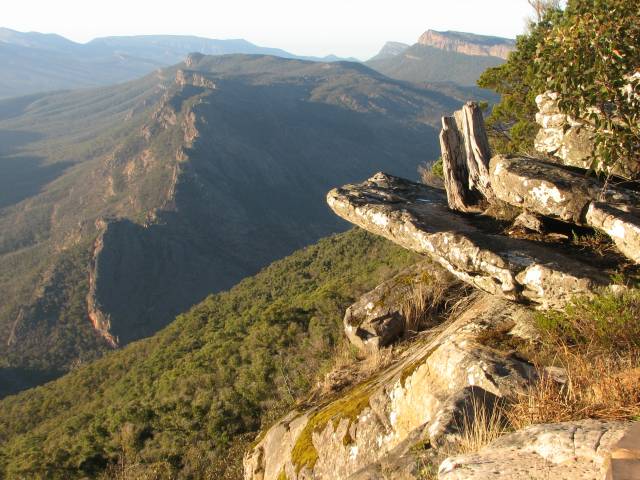
| |
Boroka Lookout, 37°07'S.
Note that the near and distant rocks all appear to be predominently grey.
As shown in another photo from the Grampians, below, when freshly broken at
least some of the Grampians sandstone is red.
Generally red colour in rocks indicates the presence of the iron oxide
haematite.
The haematite can be in the rock, or it can be a thin stain that has washed
over the surface.
When the surface of the rock is covered with biocrust such as lichen it is
the colour of the coating biocrust that is seen, rather than the rock itself
or any mineral staining on the rock.
With action on climate change being much slower than is needed it seems that
average global temperatures are likely to rise by well over two degrees in
the next century.
Will this cause some of the Grampians' rock faces to turn red?
| |
| Flinders Ranges
|
|---|
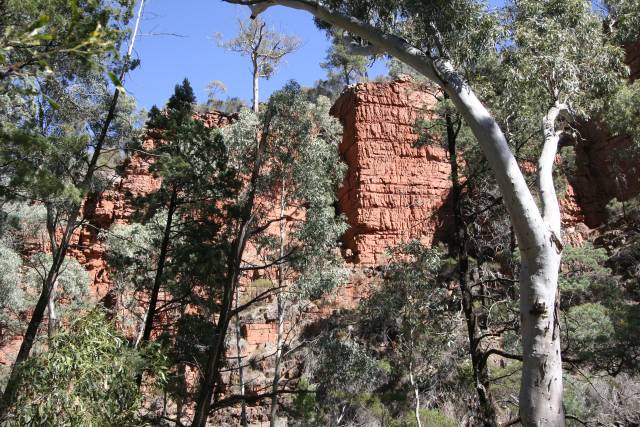
| |
Alligator Gorge, 32°45'.
These rocks, exposed fully to the Sun, are quite red.
| |
| Grampians
|
|---|
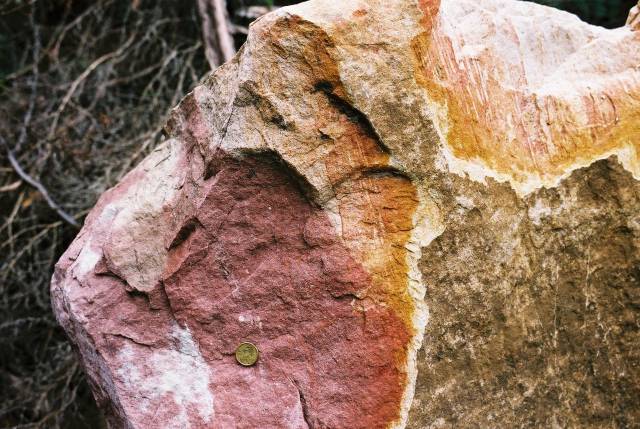
| |
A piece of Grampians sandstone.
The section on the left has been freshly broken, the part on the lower right
has been exposed to the weather for a lengthy period and is covered with
biocrust.
| |
| Grampians
|
|---|
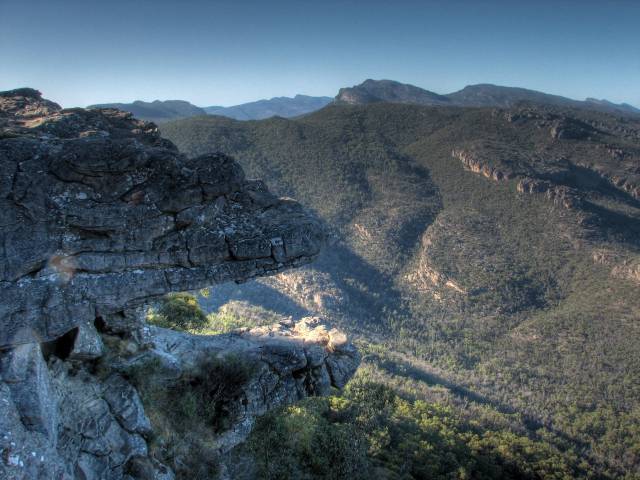
| |
A view from The Balconies, Ried's Lookout area of the Grampians, showing the
typical grey colour of the rock surface.
| |
| Flinders Ranges
|
|---|
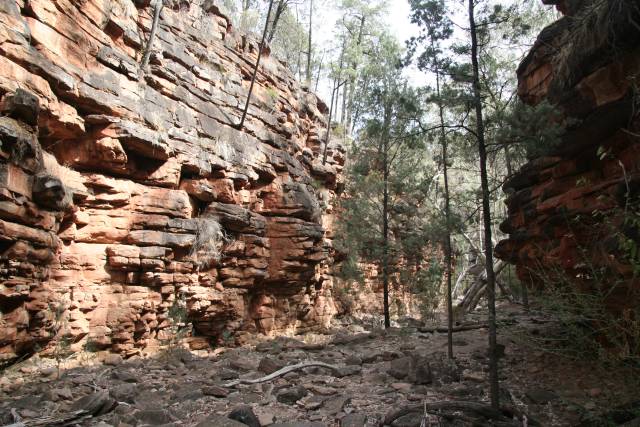
| |
This view of Alligator Gorge in the Flinders Ranges shows both red bare rock
and grey, biocrust covered, rock.
Being deep in the gorge, partly shaded by trees, and facing east, these rocks
do not get so hot as those that are more exposed to sunlight.
| |
| Flinders Ranges
|
|---|
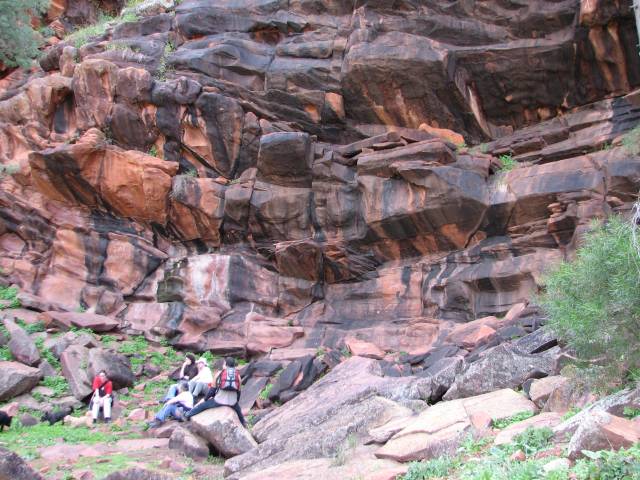
| |
Rainbow Waterfall near Rawnsley Park
The colour of the rock itself and the presence or absence of a biocrust are
not the only variables in determining the colour of rock surfaces.
Mineral solutions can stain a rock surface: iron oxides commonly cause red
staining while manganese oxides (or possibly stains of vegetable origin), as
here, cause black staining.
Related pages
On this site...
While the Flinders Ranges are in general a difficult environment for any form of biocrust, even
moss can survive in some special microenvironments, such as on the southern sides of the higher peaks.
Then there is my page on macrophotos.
External reference
Biological
soil crust, Wikipedia; does not deal specifically with biocrusts on bare
rock surfaces





